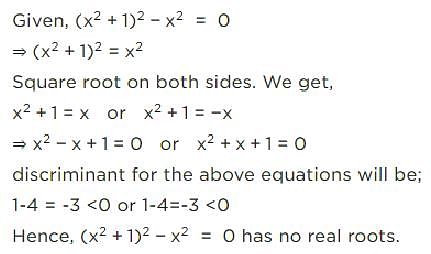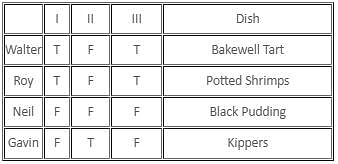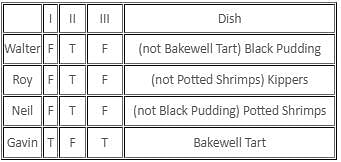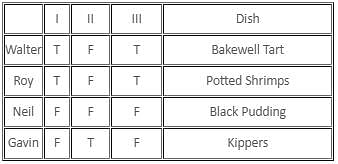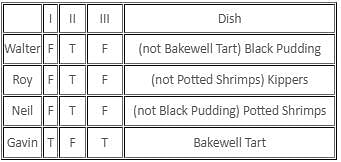CAT Practice Test: Week 17 - CAT MCQ
30 Questions MCQ Test Daily Test for CAT Preparation - CAT Practice Test: Week 17
If x = 2 is a root of the quadratic equation 3x2 – px – 2 = 0, then the value of ‘p’ is
If p = – 7 and q = 12 and x2+px+q=0, then the value of ‘x’ is
The two numbers whose sum is 27 and their product is 182 are
In a cricket match Kumble took three wickets less than twice the number of wickets taken by Srinath. The product of the number of wickets taken by these two is 20, then the number of wickets taken by Kumble is
If the sum and product of the roots of the equation kx2 + 6x + 4k = 0 are equal, then k =
The product of two successive integral multiples of 5 is 1050. Then the numbers are
Which of the following statements is/are definitely true?
Who among the following spoke the maximum number of truths?
Who among the following definitely made at least one true statement?
If Henry is not the liar, then who is the truth-teller?
Directions: Four parts of the sentence given below have been underlined. Identify the part having an error.
Directions: Four parts of the sentence given below have been underlined. Identify the part having an error.
Turquoise, (1) which is found in microscopic crystals, is opaque with (2) a waxy luster, varying in (3) colours (4) from greenish grey to sky blue.
Directions: Four parts of the sentence given below have been underlined. Identify the part having an error.
(1) While studying the chemistry of (2) human body, Dr. Rosalyn Yalow won a Nobel Prize for the research she (3) conducted on the (4) role of hormones.
Directions: The sentence below is underlined or has an underlined part. The underlined part may have an error of grammar or syntax. There are five options that seek to correct the error (including an option that simply repeats the sentence). Select the option that best replaces the underlined part.
Even before the villagers could be shifted to a safer place the river has overflown its bank.
Directions: Four parts of the sentence given below have been underlined. Identify the part having an error.
The door (1) is locked (2) from inside, someone (3) must have been (4) inside the room.
Directions: Fill in the blank with the most appropriate option.
The knee is ________ most other joints in the body because it cannot twist without injury.
Directions: A part of the sentence that has been underlined has an error. The part has been rewritten under answer options 1 to 4. Select the option that is the most coherent and precise representation of the underlined part.
I could wait hardly and would always ask if I could go to play cricket.
Directions: Four parts of the sentence given below have been underlined. Identify the part having an error.
(1) Could I (2) have (3) any cookies (4) with some coffee, please?
Directions: The sentence below is underlined or has an underlined part. The underlined part may have an error of grammar or syntax. There are four options that seek to correct the error (including an option that simply repeats the sentence). Select the option that best replaces the underlined part.
The criminals fled while the police reached the spot of crime.
|
152 docs|327 tests
|



